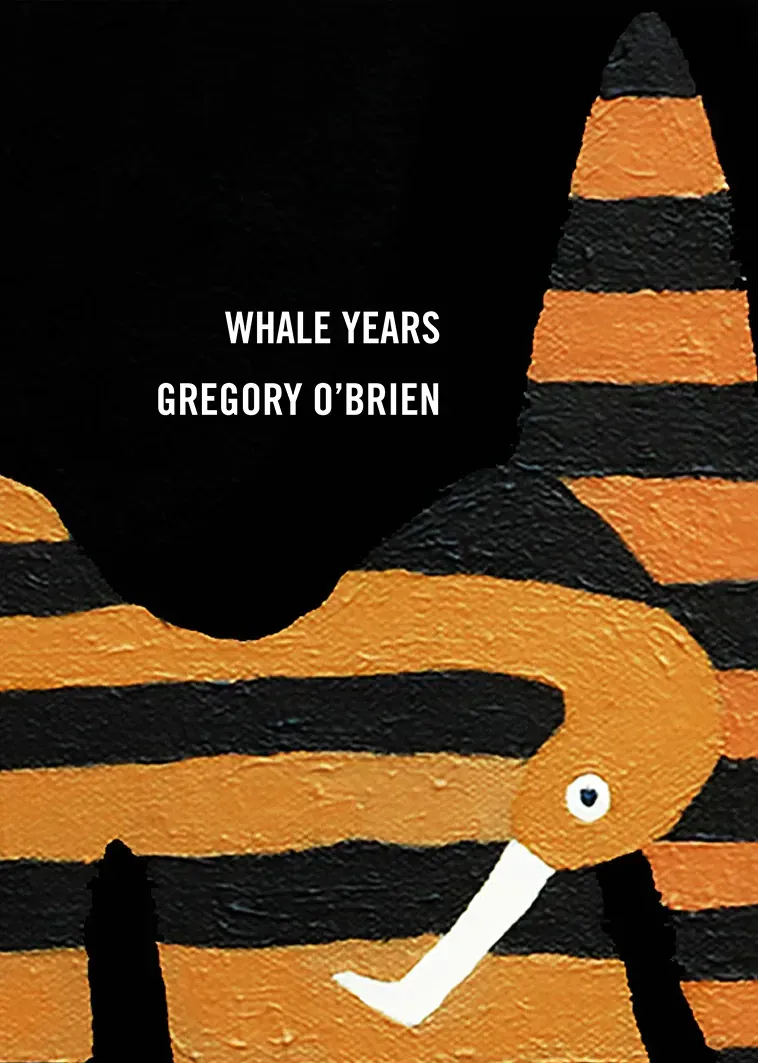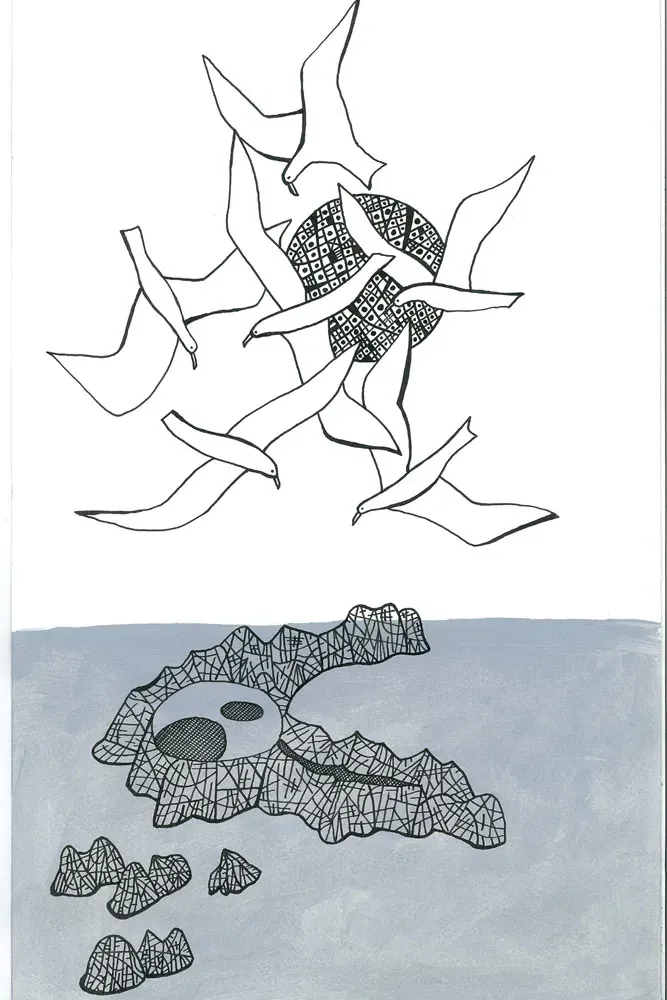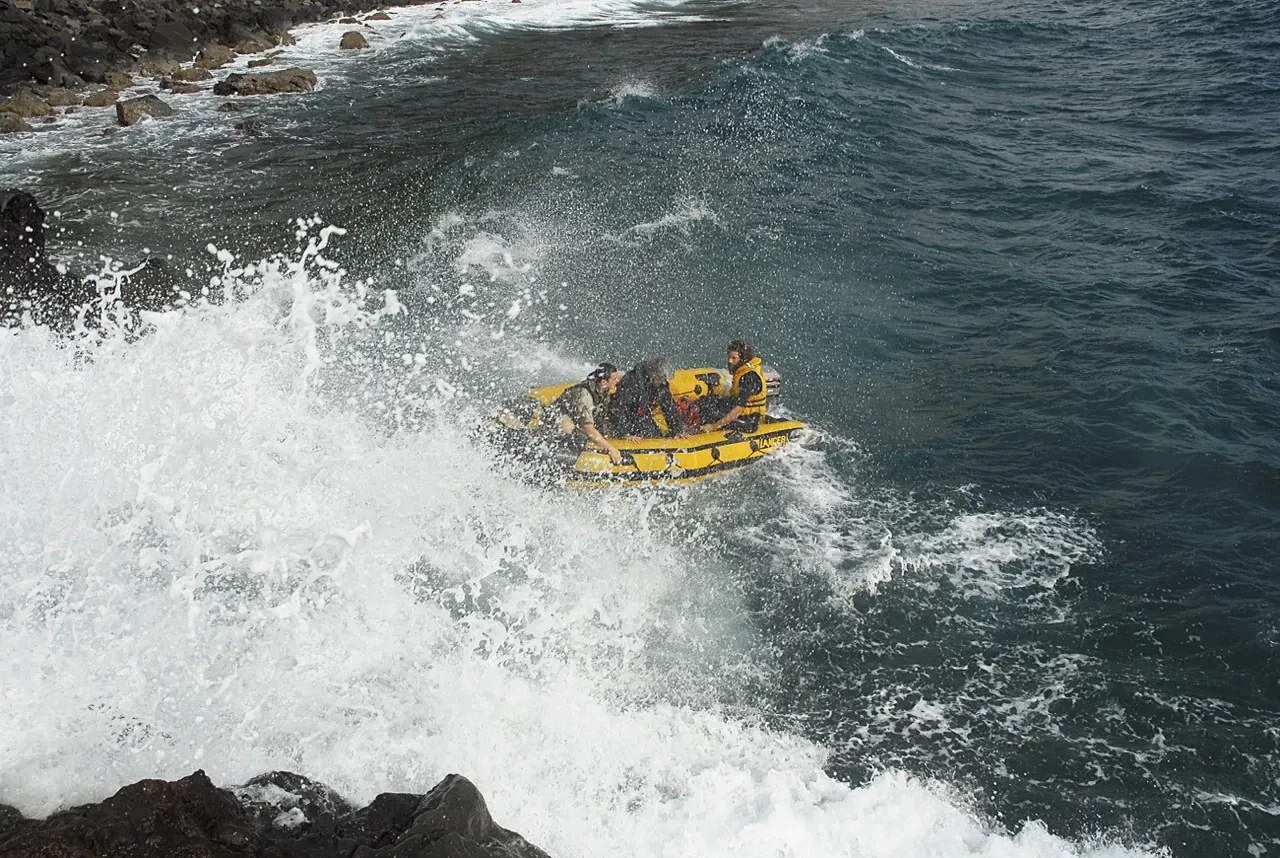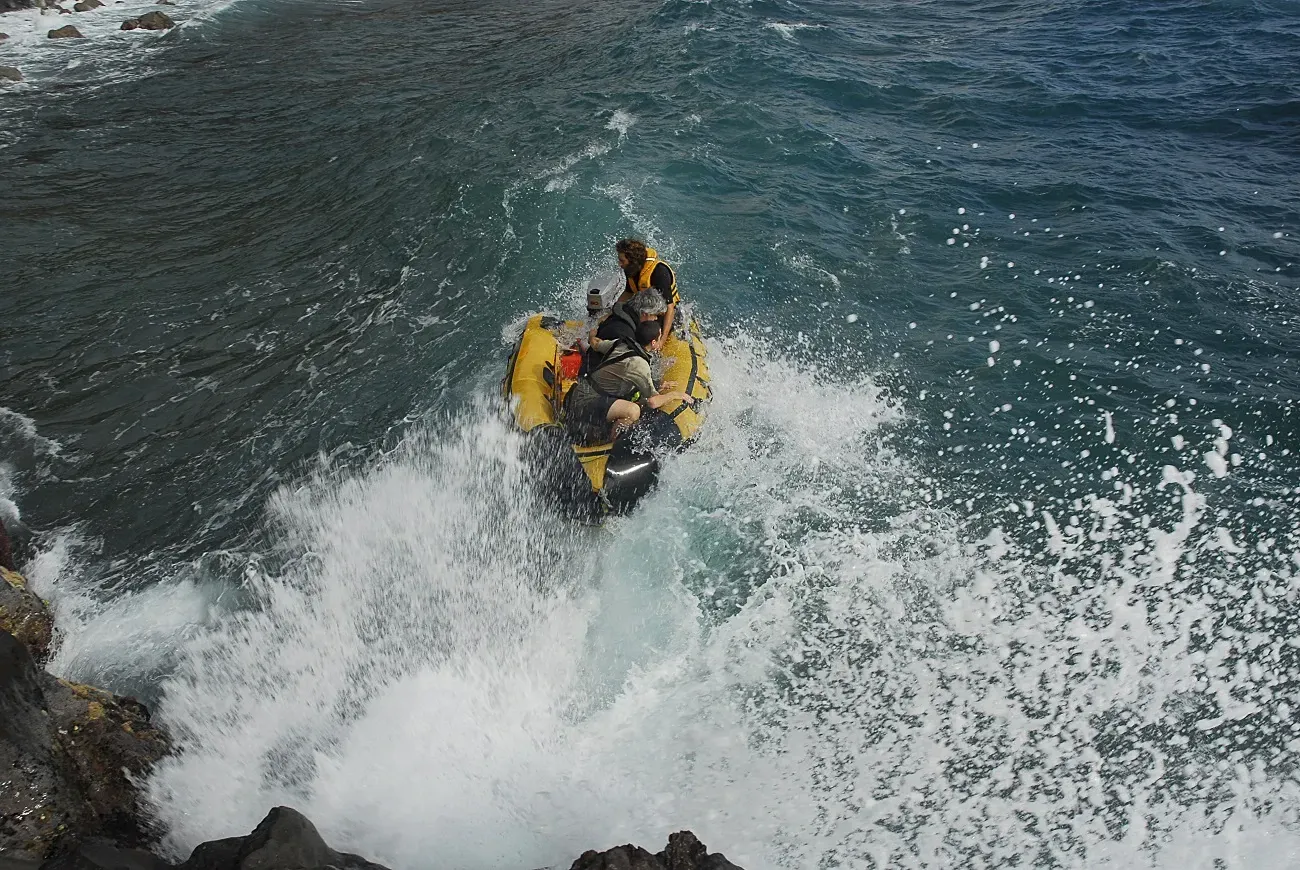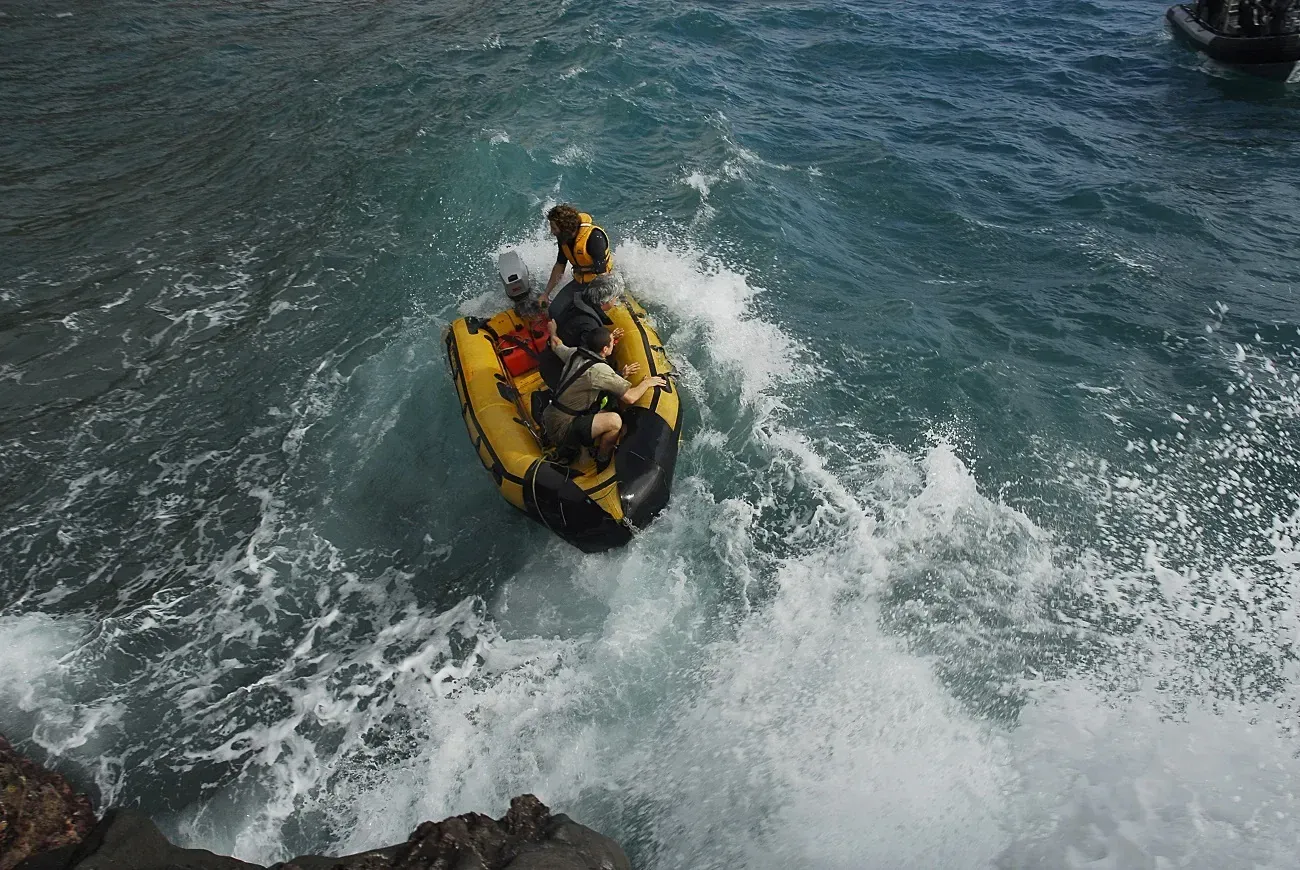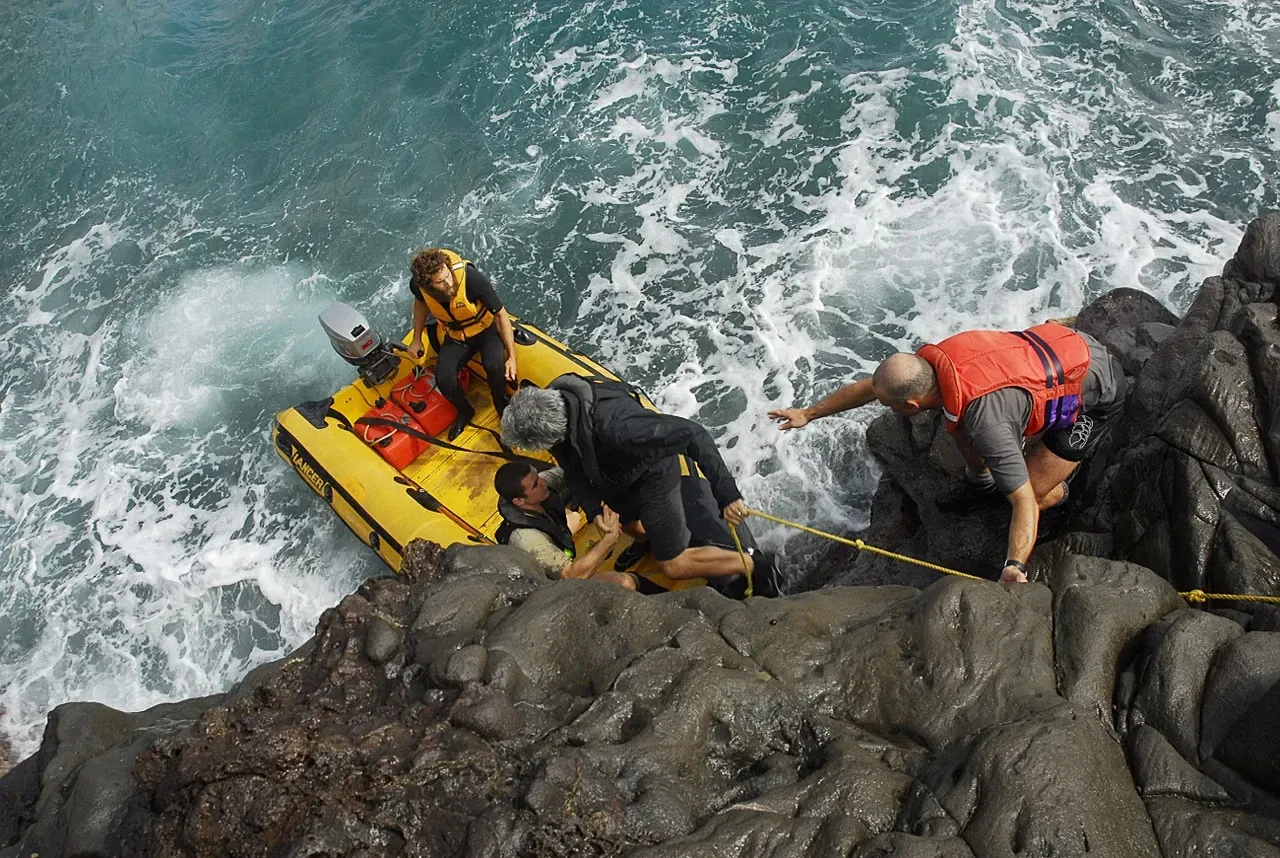Encounters with art and poetry
Written by
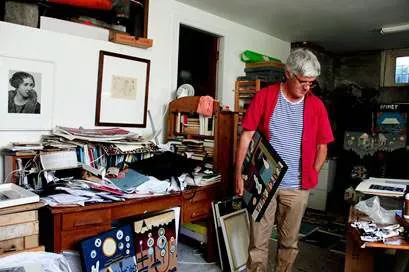
Gregory O’Brien’s latest publication Whale Years charts his encounters and explorations as he voyaged across the South Pacific. The poet and artist catches up with Dione Joseph to dip into a reflection on his expeditions.
Following the migratory routes of whales and seabirds O’Brien’s experiences between 2011 and 2014 have proved to be one of the most galvanising experiences of his lifetime. He shares the stories behind his poetry and art but in particular - his captivation with Raoul Island.
* * *
“We travelled in a tin can and it was the most torturous voyage, I couldn’t even turn while I slept and had to have one arm bent over,” says O’Brien with a laugh. “But when suddenly we arrived on the island we were immersed in so much space we didn’t know what to do with it!”
Raoul Island is New Zealand’s northern most landmass, only eight people inhabit the island: four employees and four staff. With more graves than living people and vulnerable to natural disasters (including eruptions, tsunamis and cyclones) the island gave O’Brien and his other crew members a particularly distilling experience.
“It was simultaneously visceral, surreal and yet prescient, a lifeline between one reality and another,” he explains. “It’s a kind of conversation and we talked to everyone from children to politicians and everyone in between - but it was more than just a dialogue it was an encounter with the rhythms, the energies and the vibrations that you get as a result of being absorbed into this experience, a reality that is totally unprecedented in your life.”
A close encounter with the land but also with the water, the ocean became a prime metaphor for O’Brien’s work transforming how he conceptualised New Zealand from a large landmass to a deeply interconnected body in the Pacific. Travelling from Raoul Island (in the Kermadecs), to Whakaari/White Island and Tuhua/Mayor Island (in the Bay of Plenty) as well as Rapanui/ Easter Island, Tongatapu and the Chathams each stop was an opportunity for conversation whether it was with giant crabs or with the women in Tonga weaving a tapa or even having a dip in the middle of the ocean protected by men armed with machine guns in case sharks drew near.
“There were a sequences of some of the most bizarre experiences,” says O’Brien. “It was about seasickness, it was about being discombobulated but at the same time it was about connections and mixing things up and crossing boundaries.”
Raoul Island clearly has some special moments for the poet and author who worked in collaboration with other artists including John Pule. Reminiscing about the island he explained how this particular land mass offered a “sumptuous reality where things are bigger, the birds are bigger, the fruit is bigger and it is all recognisable to NZ - but it’s as though you’re looking at it through a distorting glass where everything is in a sense ‘fuller’ and seemed far more alive”.
The title of the collection of poetry and artwork is also linked to Raoul Island (as well as the other spaces and places which O’Brien and his colleagues visited) but once again we returned to this site of bubbling activity and extraordinary extremes.
“On Raoul there’s smoke coming out of the place all the time, but also out of the water and of course there are tons of whales as well going by shooting stuff up and that’s one of the reasons it’s called Whale Years; and that’s reflected in the art: land forms, whale forms, human faces.”
“It really is about connecting the human world with the world of whales, here the reality is moister, ‘cooked’ and somewhere in between a glorious dream and your worst nightmare – there is a sense of a brooding melancholy, between geography and the imagination and it’s this sense of deep listening that resonates with me even now.”
O’Brien himself carries an almost visible aura of exuberance that seems not to have lost any of its glow since completing this voyage. Armed with stories of carnivorous plants who eat Tuis to tree climbing goats and the lives lost to the heaving island his musings are poignant, honest and (although once removed) galvanising for any lover of poetry and art and the powerful intersections they make.
- See Greg O’Brien at the Auckland Writers Festival 16 May
- Auckland Writers Festival is on 13 - 17 May
